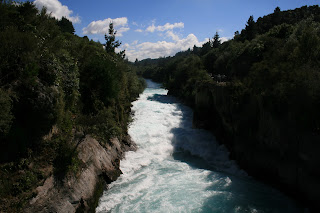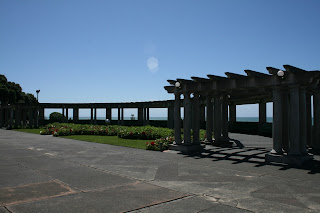15 kilometers outside of Rotorua is the buried village of Te Wairo. At this site were the Pink and White Terraces. These Silica terraces had been formed from the hot springs that poured down the mountain side, the minerals in the water creating different colours. The water cooled as it came down the terraces so various areas could be used for bathing , cooking and water source for the Maori villagers. The area became a huge attraction after the British settled New Zealand and the Maori became very wealthy acting as guides to the Terraces.

Around June 7th, 1850, a group of tourists were in a boat on the lake with their Maori guide , Sophia. They saw a huku or war canoe approaching filled with warriors. As the boat came near the warriors turned to dogs then disappeared. Sophia went to the village elder with the vision. The elder predicted a terrible event would happen because of the Maori's greed .Sure enough in the early morning of June 10, Mount Terawera erupted. While the volcanoe was some 7 kilometres from the village, the ash from the volcano buried the village and killed 120 people. 4 days after the eruptions the elder who had predicted the disaster was dug out of his whare seen above.
The eruption created a 100 foot crater at Lake Rotomohana and covered the Terraces. The crater was eventually filled with water extending the lake size by about another third. While I was in NZ , researchers had discovered evidence that some of the terraces may still be intact at the bottom of the lake. They will be doing further excavation in the future.
The banks at the sides of the whare indicate the height of the ash which covered the buildings. Experts believe that the A frame shape of the Maori whares saved many villagers as the ash could slide off the roof, but it was about 25 feet deep. Virtually all the European style buildings collapsed under the weight of the ash. This included a three storey hotel. One of the survivors of the eruptions was able to visit the area in 1930 when excavations commenced. he was able to give details of where buildings were located and who lived in area.
This avenue of Poplars survived the eruption. The missionary who had built up the village area in the mid 1850's had transported these poplars from Illinois. They had their tops cut off to make fence posts. My cousin , who is a horticulturist confirmed that it was common practice to top off the poplars as the tops would regenerate and keep the settlers supplied with wood for building.
Te Wairo Waterfall- 180 feet in total
















































